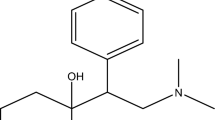Abstract
Multi-walled carbon nanotubes (MWCNT) are shown to be efficient transducers of the ionic-to-electronic current. This enables the development of a new solid-contact pH-selective electrode that is based on the deposition of a 35-µm thick layer of MWCNT between the acrylic ion-selective membrane and the glassy carbon rod used as the electrical conductor. The ion-selective membrane was prepared by incorporating tridodecylamine as the ionophore, potassium tetrakis[3,5-bis(trifluoromethyl)phenyl]borate as the lipophilic additive in a polymerized methylmethacrylate and an n-butyl acrylate matrix. The potentiometric response shows Nernstian behaviour and a linear dynamic range between 2.89 and 9.90 pH values. The response time for this electrode was less than 10 s throughout the whole working range. The electrode shows a high selectivity towards interfering ions. Electrochemical impedance spectroscopy and chronopotentiometry techniques were used to characterise the electrochemical behaviour and the stability of the carbon-nanotube-based ion-selective electrodes.





Similar content being viewed by others
References
Bakker E, Pretsch E (2007) Modern potentiometry. Angew Chem Int Edit 46(30):5660–5668
Bobacka J, Ivaska A, Lewenstam A (2008) Potentiometric ion sensors. Chem Rev 108(2):329–351
Chumbimuni-Torres KY, Rubinova N, Radu A, Kubota LT, Bakker E (2006) Solid contact potentiometric sensors for trace level measurements. Anal Chem 78(4):1318–1322
Michalska A, Hulanicki A, Lewenstam A (1994) All-solid-state hydrogen ion-selective electrode based on a conducting poly(pyrrole) solid contact. Analyst 119(11):2417–2420
Lindner E, Gyurcsanyi RE (2009) Quality control criteria for solid-contact, solvent polymeric membrane ion-selective electrodes. J Solid State Electrochem 13(1):51–68
Lai CZ, Joyer MM, Fierke MA, Petkovich ND, Stein A, Buhlmann P (2009) Subnanomolar detection limit application of ion-selective electrodes with three-dimensionally ordered macroporous (3DOM) carbon solid contacts. J Solid State Electrochem 13(1):123–128
Fouskaki M, Chaniotakis N (2008) Fullerene-based electrochemical buffer layer for ion-selective electrodes. Analyst 133(8):1072–1075
Crespo GA, Macho S, Rius FX (2008) Ion-selective electrodes using carbon nanotubes as ion-to-electron transducers. Anal Chem 80(4):1316–1322
Crespo GA, Macho S, Bobacka J, Rius FX (2009) Transduction mechanism of carbon nanotubes in solid-contact ion-selective electrodes. Anal Chem 81(2):676–681
Lai CZ, Fierke MA, Stein A, Buhlmann P (2007) Ion-selective electrodes with three-dimensionally ordered macroporous carbon as the solid contact. Anal Chem 79(12):4621–4626
Dai HJ (2002) Carbon nanotubes: opportunities and challenges. Surf Sci 500(1–3):218–241
Monthioux M, Serp P, Flahaut E, Razafinimanana M, Laurent C, Peigney A, Bacsa W, Broto J-M (2007) Introduction to carbon nanotubes. In Springer Handbook of Nanotechnology, pp 43-112
Heng LY, Chern LH, Ahmad M (2002) A hydrogen ion-selective sensor based on non-plasticised methacrylic-acrylic membranes. Sensors 2(8):339–346
Heng LY, Hall EAH (2000) Methacrylic-acrylic polymers in ion-selective membranes: achieving the right polymer recipe. Anal Chim Acta 403(1–2):77–89
Buck RP, Lindner E (1994) Recommendations for nomenclature of ion-selective electrodes (IUPAC recommendations 1994). Pure and Applied Chemistry 66(12):2527–2536
Bakker E, Pretsch E, Buhlmann P (2000) Selectivity of potentiometric ion sensors. Anal Chem 72(6):1127–1133
Piao MH, Yoon JH, Gerok J, Shim YB (2003) Characterization of all solid state hydrogen ion selective electrode based on PVC-SR hybrid membranes. Sensors 3(6):192–201
Bobacka J (1999) Potential stability of all-solid-state ion-selective electrodes using conducting polymers as ion-to-electron transducers. Anal Chem 71(21):4932–4937
Fibbioli M, Morf WE, Badertscher M, de Rooij NF, Pretsch E (2000) Potential drifts of solid-contacted ion-selective electrodes due to zero-current ion fluxes through the sensor membrane. Electroanalysis 12(16):1286–1292
Acknowledgements
This work was supported by the Spanish MICINN, through the project grants NAN2004-09306-C05-05 and CTQ2006-7-67570/BQU. G.A.C. also acknowledges MICINN for the doctoral fellowship AP2006-04171 and D.G acknowledges the economic support provided by the Universitat Rovira i Virgili.
Author information
Authors and Affiliations
Corresponding author
Rights and permissions
About this article
Cite this article
Crespo, G.A., Gugsa, D., Macho, S. et al. Solid-contact pH-selective electrode using multi-walled carbon nanotubes. Anal Bioanal Chem 395, 2371–2376 (2009). https://doi.org/10.1007/s00216-009-3127-8
Received:
Revised:
Accepted:
Published:
Issue Date:
DOI: https://doi.org/10.1007/s00216-009-3127-8




